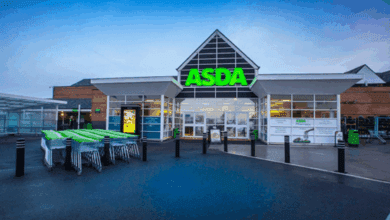Experiential marketing: driving engagement in-store
We'll explore the strategies, benefits, and best practices for retailers looking to implement experiential marketing to its full potential

Register to get 1 free article
Reveal the article below by registering for our email newsletter.
Want unlimited access? View Plans
Already have an account? Sign in
Understand experiential marketing
Start with a clear understanding of experiential marketing and how it differs from traditional retail approaches. Experiential marketing focuses on creating immersive, memorable experiences for customers.
Define your objectives
Clearly outline your goals for experiential marketing. Do you want to increase foot traffic, enhance brand loyalty, promote a new product, or gather customer data? Having well-defined objectives is crucial.
Target audience analysis
Understand your target audience and what types of experiences resonate with them. Tailor your experiential marketing efforts to match their preferences. Create interactive displays and installations that allow customers to engage physically or digitally with your products.
Legal and regulatory compliance
Ensure that your experiential marketing campaigns comply with relevant legal and regulatory requirements, including safety and permits.
Events and workshops
Host events, workshops, and demonstrations that offer customers a chance to learn, participate, and experience your products first-hand. You should also consider encouraging customers to sample and try products in-store.
Technology integration
Utilise technology such as augmented reality (AR) or virtual reality (VR) to create immersive and interactive experiences in-store.
Storytelling and cultivating a theme
Don’t forget to craft a compelling narrative or theme for your in-store experiences to make them more engaging and memorable. It’s important to design experiences that evoke emotions, leaving a lasting impression on customers. Emotional engagement often leads to brand loyalty.
Customer feedback and interaction
Collect customer feedback during experiential marketing events to learn more about what works and what needs improvement.
Data collection and analysis
Utilise data gathered from experiential marketing to refine your strategy and tailor future experiences.
Social media integration
Encourage customers to share their experiential moments on social media platforms to extend your reach and build brand awareness. Ensure that your in-store experiences align with and enhance your brand’s identity, values, and mission.
Measuring success
Develop key performance indicators (KPIs) and metrics to assess the success of your experiential marketing campaigns. These may include foot traffic, social media engagement, and sales increases.
Employee training
Train your staff to assist and engage with customers during experiential marketing events. Their enthusiasm and knowledge can enhance the experience.
Feedback loop
Create a feedback loop that allows customers to provide input on their experiential interactions and suggests improvements.
Sustainability and green initiatives
Incorporate sustainable and eco-friendly elements into your experiential marketing to align with customer values.
Ongoing innovation
Continually innovate and update your in-store experiences to keep customers engaged and excited about returning.
Cross-channel integration
Integrate your experiential marketing efforts with your online and mobile channels, providing a consistent brand experience.







